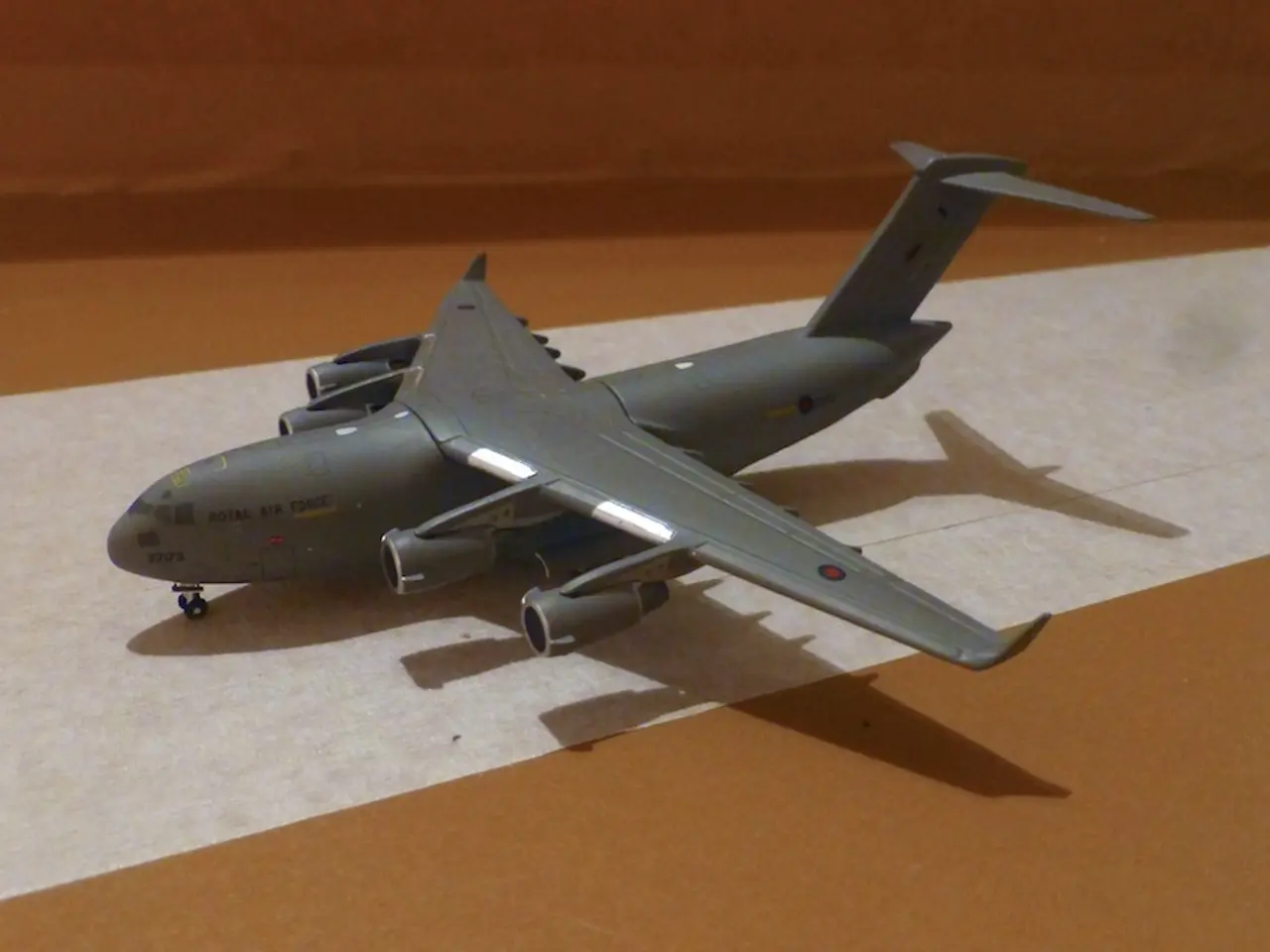Military financing for additional attachments on B-1 bombers, aiming to expand payload capacity and experiment with hypersonic weapon testing
The B-1B Lancer, a stalwart of the U.S. Air Force, is set for a significant upgrade. The bomber will be equipped with new external pylons known as Load Adaptable Modular (LAM) pylons, enhancing its capacity to carry standoff munitions, including hypersonic missiles [1][2][3][5].
Each B-1B can accommodate six LAM pylons, with each pylon capable of carrying either two 2,000-pound bombs or a single weapon weighing 5,000 pounds or more [1]. This upgrade boosts the B-1B's weapons loadout flexibility, allowing it to test and carry modern, heavy, and future weapons systems that were previously limited by internal bomb bay space.
The External Heavy-Stores Pylon program, funded in the U.S. Air Force's Fiscal Year 2026 budget with over $50 million, aims to increase the carriage capacity of standoff munitions on B-1B aircraft [1]. The primary purpose of this initiative is twofold: increasing the number of hypersonic missile tests that the B-1B can support in the near term, and expanding its standoff weapons carriage capacity to maintain combat effectiveness while the Air Force transitions to the new B-21 bomber [1][3][4].
The LAM pylons have undergone rigorous testing, including captive carry and weapon release trials at Edwards Air Force Base with the 419th Flight Test Squadron. These trials validated the pylons' payload capacity and compatibility with large and emerging weapon shapes, including hypersonic weapons [4][5]. Boeing, the contractor, reports that the pylons have been tested with payloads up to 5,000 pounds and can potentially handle loads up to 7,500 pounds, enabling future weapon systems integration [4][5].
The B-1B's capacity for carrying standoff munitions is set to increase substantially. With the new pylons, the B-1B's loadout of JASSM or LRASM could potentially increase from 24 missiles internally to 36 in a mix of internal and external hardpoints [1][2]. Furthermore, the LAM, capable of carrying up to 7,500 pounds, could potentially carry the ARRW, which is estimated to weigh around 6,500 pounds [1].
The Air Force is also developing at least two air-launched hypersonic missiles, including the Hypersonic Attack Cruise Missile (HACM) [3]. The LRASM, one of these missiles, addresses an air-launch capability gap, providing flexible, long-range, advanced, anti-surface capability against high-threat maritime targets [2].
In summary, the new external Load Adaptable Modular pylons dramatically expand the B-1B bomber's capability to carry and test heavy standoff munitions and hypersonic missiles, increasing its lethality and operational flexibility during the transition to the B-21 [1][2][3][4][5]. The B-1B's enhanced capacity to carry more standoff munitions provides the Air Force with a valuable asset, ensuring it can deliver a greater volume of fires per sortie, should there be any delays as the B-21 enters the fleet.
- The U.S. Air Force's B-1B Lancer, after its significant upgrade, will be equipped to carry various standoff munitions, including hypersonic missiles, with the help of the new Load Adaptable Modular (LAM) pylons.
- The LAM pylons, following rigorous testing, have proven their compatibility with large and emerging weapon shapes, such as hypersonic weapons, and can potentially handle loads up to 7,500 pounds, enabling future weapon systems integration.
- Apart from the B-1B, the Air Force is also developing air-launched hypersonic missiles, like the Hypersonic Attack Cruise Missile (HACM) and the LRASM, addressing an air-launch capability gap.
- As the Air Force transits to the new B-21 bomber, the upgraded B-1B, with its expanded capacity for carrying more standoff munitions, provides a valuable asset, ensuring a greater volume of fires per sortie should there be any delays in the B-21's entry into the fleet. Additionally, the development of the Space Force could potentially broaden the B-1B's role in securing space.




